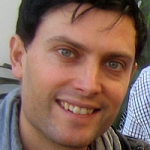Ric Stott asks whether we should be founding cities or building shrines.
In her book Wild: An Elemental Journey, Jay Griffiths takes journeys through some of the world's greatest wildernesses. For Griffiths the wilderness isn't a desolate place in need of taming and civilising but a place of rich life and diverse indigenous spiritualities. As she travels up the Amazon she offers a quote from Lucio Costa, the architect of the city of Brasilia (which was laid out in the shape of a cross). He says that the founding of a city is:
a deliberate act of possession, a gesture in the colonial tradition of the pioneers, of taming the wilderness
As someone who is described by my church as a 'pioneer', I find this quote unsettling. If the ultimate aim of the pioneer is to build a city, to subdue and tame the wilderness and bring civilisation (or at least the church's version of it) to smother rich, indigenous cultures then I want no part in that ministry. The church operates in this way when it uses the language of armies and empire, of claiming ground and raising the flag to loudly proclaim our identity.
Over the last six years of pioneering ministry amongst artists in Sheffield I have found, as Griffiths did, a rich and deep engagement with what it means to be human and what it means to live as spiritual and creative beings. As relationships strengthen and I am at home in this milieu, it feels increasingly inappropriate to be in the business of building walls and founding a city. There is a wild and exuberant life here that should never be tamed.
What then might my task here be as someone called a pioneer by my church? I begin to get a hint from Allen Ginsberg's poem A Desolation where he talks of travelling through the wilderness. With a beautiful queer sensibility he weighs up the options of finding a wife, growing a family and fitting into the social norms but rejects that and moves into wilder places where he can…
…maybe make an image
of my wandering, a little
image-shrine by the
roadside to signify
to traveler that I live
here in the wilderness
awake and at home.
Perhaps the call of the pioneer is not to found cities but to build shrines by the wayside as we travel; to signify those places where we have found life and wonder: signs of sacred space. This is a risky endeavour. Whilst the city is safe behind its wall the shrine is exposed, anyone can approach and interact with it in any way that they choose.
One of my models for pioneering ministry is St Kevin. He was a hermit who lived in Ireland in the 6th century, a man who sought solitude and would go out alone into the forests of the Wicklow Mountains, particularly in the area known as Glendalough. Amidst the dark mossy green, in the womb of the forest, he would pray. One of the stories told of his life tells of the time he went to pray in the forest with his arms outstretched. In the stillness a blackbird flew and alighted on his open hand. As he held that place of gentle meditation the bird laid her eggs. And so he held his palm open, cradling them, holding that still place, for the two weeks it took for the eggs to hatch.
It is Kevin's quiet, prayerful presence that nurtures the life which is latent in the wilderness around him; not his grand schemes, clever strategies and expensive building plans. Contrast the busyness of the city with the stillness of the shrine, the assertiveness of the city walls with the shrine's tentative presence, the noise of the urban throng with the shrine's silence.
I'm sure that at times, cities need to be built and perhaps some pioneers are called to do just that. But if I sense a wall being built around a shrine I've made and the prescriptive hand of civilisation beginning to corral and control the wild and intricate web of life that is present then I will pack my bags and move on. Pressing on further and deeper I will find a new place for a new shrine. And when I turn to Christ with excitement to tell him what I've found he will, no doubt, smile at me and say 'Yes I know, I was here all along'.
Revd Ric Stott is a Venture FX pioneer with the Methodist Church. He is based in Sheffield where he works with a community of artists developing creative, sacred space.
Please note that comments and views may not represent those of Fresh Expressions.
 Ric Stott discusses what happens when the dam bursts.
Ric Stott discusses what happens when the dam bursts.
